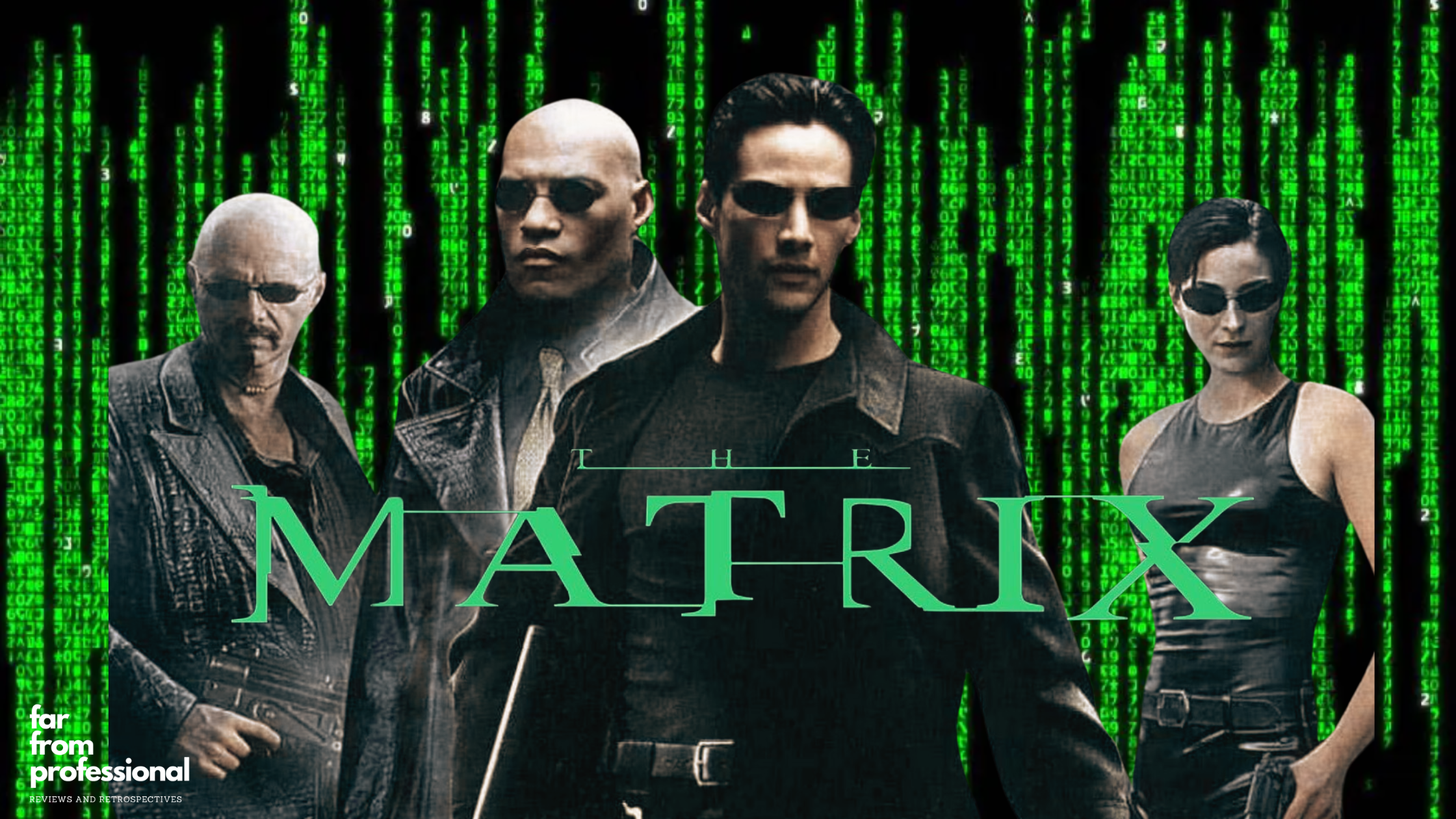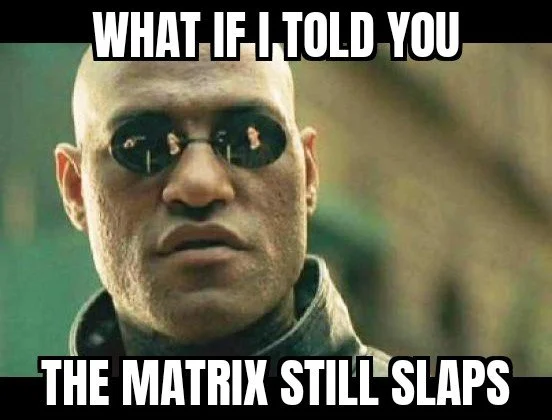The Matrix: 25th Anniversary
Image by Nick M.W.
This nighmarish spin on our reality celebrates its quarter-century mark and has never felt more relevant than now.
In late March of 1999, a little-known sci-fi action movie starring Keanu Reeves and Lawrence Fishburn called The Matrix mesmerized audiences with mind-blowing action sequences and inspired bullet-time clones forever after. It hit me in the chest like a front kick from Agent Smith.
I was a seventeen-year-old professional movie-goer back then; I saw a lot of movies in high school, and among the 100+ I easily clocked, The Matrix was something I had never seen before—a cyberpunk, gun fu action movie inspired by [detail], with a touch of industrial techno flavor that certifies it as a relic from the late-90s. The Wachowski brothers (then) stuffed The Matrix with dozens of meta-easter eggs fans for fans of philosophy and detractors of technology.
It’s true. We are at a time in cinematic history when we can go back and watch a twenty-five-year-old movie, like The Matrix, and not be completely ripped out of the story by shoddy CGI. The movie feels a little dated, particularly in its depiction of technology. It’s easy to believe that the cellphones we see in the Matrix, the software program, look like the hottest shit that was available in 1999. Remember, the machines that developed the Matrix designed it to replicate “peak civilization” at the turn of the 21st century, which explains why we see phone booths in the city, but it doesn’t explain why we don’t see any Honda Civics. And where are all the damn Furbies? It was not impossible back then to imagine that those automated furry devils would overtake humanity by 2199 because they were ubiquitous in 1999. Adults fighting over Furbies was a clear sign that we were living in a simulation.
Through all its cool nostalgia and references for über-hip anime enthusiasts, The Matrix matters more today because now the reality that was presented in that movie doesn’t seem like it’s 100 years away. It was a lot harder to picture a world like the Matrix in the future back in 1999. Even with people’s nerves on edge because of the looming Y2K “threat”, the prospect of machines taking over the world wasn’t scary. Movie-goers already dealt with The Terminator and its superior sequel. The great machine takeover felt conceptual back then. Even brilliant creative minds, like James Cameron and the Wachowski sisters (now), couldn’t imagine what the AI takeover would actually look like. They presented it as aggressive act, carried out by monstrous hardware: cyborgs and sentinels. When in our current reality, the takeover has been much more passive. We’ve willingly given AI enough access to human memory that it can recreate us. It’s not quite perfect, yet, but we’re probably within a decade of seeing some truly twisted shit.
Smartphones are the T-800s and Chat GPT is Agent Smith. Where can we run when we can’t hide?
The Matrix is celebrating its 25th anniversary with the requisite remaster by Warner Bros., available for streaming on Max (not a paid plug). It still looks great and is one of the best sci-fi action movies ever made; it is one-third of the Holy Trinity of bangers in this genre (the other two are T2 and Aliens). Most importantly, and perhaps most relevant to where we are at this point in history, The Matrix serves as an omen, prophesizing where our explorations with artificial intelligence will probably take us.



